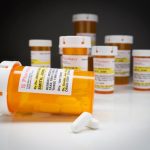
City dwellers are less likely to be healthy, happy and well-off than people living outside urban areas, a new study reports. Instead, there’s a suburban “Goldilocks zone” between cities and rural areas where people are happiest, researchers report. “Areas near cities but beyond their boundaries… show the highest and most equal levels of psychological satisfaction,” said lead researcher Adam Finnemann, a psychologist and doctoral student with the University of Amsterdam’s Center for Urban Mental Health. For the study, researchers analyzed data on 156,000 people aged 40 and older drawn from the UK Biobank, a major health research database. The researchers used a new method of assessing whether someone lived in a city, suburb or rural area, based on both their distance from the nearest city center as well as the population density of that urban area. Thus, the team accounted “for the fact that living 15 kilometers from London differs from living 15 kilometers from Leeds—one is still urbanized while the other is countryside,” Finnemann said in a university news release. Results showed that while urban residents had the highest incomes, this didn’t make them happier. Instead, people in highly urban areas scored worse on a series of eight measures covering well-being, social satisfaction and economic contentment. Despite these scores, people are flocking to cities. The percentage of people living in cities has surged from… read on > read on >













-150x150.jpeg)



-150x150.jpeg)